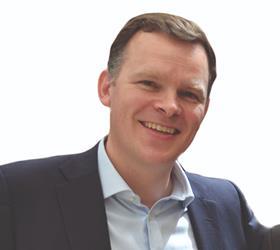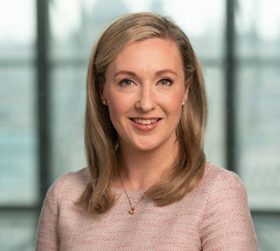Following a greater regulatory focus on firms’ net zero transition plans, Insurance Times asks the industry how its climate change strategies are progressing
Hannah Gurga, director general, ABI

For a sector that is responsible for protecting society from risk, the threat of climate change poses important questions about how we need to adapt, change and innovate.
In July 2021, the ABI published its ambitious Climate Change Roadmap, which was a world first for a domestic insurance market.
It sets out clear milestones to reach net zero by 2050, proposals to unleash investment into the UK’s green infrastructure and identifies ways to help customers make sustainable choices.
The progress our members have made in setting science-based net zero targets has been acknowledged by the ABI being awarded ‘accelerator’ status by the United Nation’s (UN) Race To Zero campaign.
In the past year, the ABI and some of its members have been major contributors to the Bank of England’s climate change scenario testing analysis and the ABI has also become a member of the Taskforce on Nature-related Financial Disclosures Forum (TNFD). The publication of our best practice guide on green supply chains is also imminent.
Our sector has almost more levers to pull than any other – as an investor in green technologies, a risk manager, an employer of over 310,000 people around the UK and an industry that can positively influence supply chains globally, as well as the behaviour of millions of consumers.
Yet climate change is an existential threat to the insurance industry itself.
If global warming is not curbed, the risk will become too big for the market to deal with alone. We must remain committed to working collectively and at speed on this most vital challenge to our industry and our planet.
Richard Dudley, global head of climate strategy, Aon
The UK’s ambition to transition to net zero by 2050 is a challenge for the entire economy - and the insurance industry is no exception.
However, the challenge requires not that we walk away from risk, but that we jump in, feet first, to close the gap between where clients are now and the greater resiliency they will need to transition to net zero.

What does this work look like? At Aon, it means three things: data and analytics to advance risk modelling, expertise that drives insights and a combination of the two to attract capital to the new risks, investments and technology that will lead to decarbonisation.
Underwriters around the world are some of the most innovative when it comes to investing in the assets of a green future, but risk takers need to be just as innovative when underwriting the liabilities and risks associated with the same future.
Without that part of the risk transfer market, our global economy cannot achieve the pace and scale of climate transition that we need to thrive.
We must combat the risk aversion that leads to business as usual. Insight and capital from the insurance sector can innovate, accelerate and underwrite real climate transition.
Rebekah Clement, sustainability director, Lloyd’s of London

Insurance has a central role to play in the UK’s transition to net zero, creating the conditions in which people lend, spend and save.
At Lloyd’s, we’ve committed to being the insurer of the net zero transition. This transition should be orderly, but urgent – supporting our customers as they shift to low carbon models, while recognising the urgent challenge that climate change poses.
In practice, that means working with managing agents to develop plans to reach a net zero underwriting position by 2050. Last year, we released comprehensive guidance to support these plans and we’ll be working to embed them in 2022 and beyond.
It also means corralling our industry and society to take action.
As chair of the Sustainable Markets Initiative Insurance Task Force, we’re helping society build climate resilience – from developing innovative products to mitigate climate change, such as hydrogen production and transportation cover, to helping society adapt to effects of climate change, for example through the disaster resilience framework we launched last November.
By insuring the transition, we can unlock brave climate action and innovation while helping customers to rapidly decarbonise towards a sustainable, low carbon future. The work is nowhere near done, but we’re proud of the progress we’ve made.
Catherine Dixon, chief underwriting officer, Allianz Insurance
To limit global warming, the world economy needs to move quickly away from fossil fuels and towards the use of renewable energy sources. That is why Allianz Group has updated its environmental targets. We are already withdrawing from covering coal projects and from next year, we will no longer invest in or insure new oil and gas fields. We’ll also exclude many activities in the Arctic and Antarctic.

From 2025, we will only insure or invest in oil and gas companies which have committed to achieving net zero emissions by 2050. That is how we want to support the decarbonisation of the economy and the development of green energy sources.
As a company, we will limit our own emissions in over 70 markets to net zero by 2030, instead of 2050. This, of course, includes the UK, where our operations have been carbon neutral since 2012 and our offices use 100% renewable energy. We want to share these ambitions with our partners.
Our sustainable procurement charter prioritises and supports suppliers that take environmental, social and governance (ESG) questions seriously. The Allianz Net Zero Accelerator scheme, meanwhile, helps independent brokers measure, reduce and offset their carbon emissions.
Beccy Brown, chief of staff, Aviva

The insurance industry is well placed to help individual and commercial customers in their transition to making more sustainable choices.
At Aviva, we aim to set the example and are targeting net zero by 2030 for our own carbon emissions and those of our suppliers.
For customers’ and shareholders’ investments and general insurance underwriting, our net zero target is 2040.
We’re the first major global insurer to target net zero carbon emissions by 2040. We are proud that we have been recognised in Sustainalytics ESG risk ratings, which ranked Aviva fifth out of 296 global insurers.
We have already taken action. We stopped providing cover for fossil fuel power generation three years ago. Since then, we’ve grown our renewable energy insurance business to more than 150% of the size of the fossil fuel book we exited in 2019.
We’ve also launched our Aviva Zero car insurance, with a carbon offsetting feature.We continue to work with customers to provide insurance and risk management solutions that help them to move away from carbon intensive choices.
As we work towards our 2040 target, it is critical that we bring all of our insurance community with us. It is only through collective action that we can minimise the impact of climate change.
Reto Schnarwiler, head of group sustainability, Swiss Re

Supporting the transition to net zero carbon emissions has become a fast developing theme within the insurance industry. (Re)insurers are uniquely placed to accelerate action through their investments, underwriting and operations.
As an industry, we must continue to evolve our way of doing business towards a low carbon economy - in line with the Paris Agreement. For example, through offering solutions to manage the risks of different kinds of renewable energy projects, as well as seeing how we can develop and harness various analytical tools to manage climate change risks and address sustainability challenges.
At Swiss Re, we have been gradually stepping away from thermal coal business and have committed to reduce our exposure to most carbon intense oil and gas business on both the underwriting and investment side. We aim to be net zero by 2050. On the operational side, we are even more ambitious and aim to be net zero by 2030.
We have made good progress towards our net zero targets so far and we will continue to pursue our efforts while maintaining the dialogue with clients and stakeholders.
Tackling one of the greatest challenges of our time requires dedicated efforts from all market participants and an exchange between industries and policymakers around the world to make the transition to net zero equitable and sustainable.
Hosted by comedian and actor Tom Allen, 34 Gold, 23 Silver and 22 Bronze awards were handed out across an amazing 34 categories recognising brilliance and innovation right across the breadth of UK general insurance.





















































No comments yet